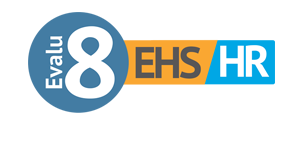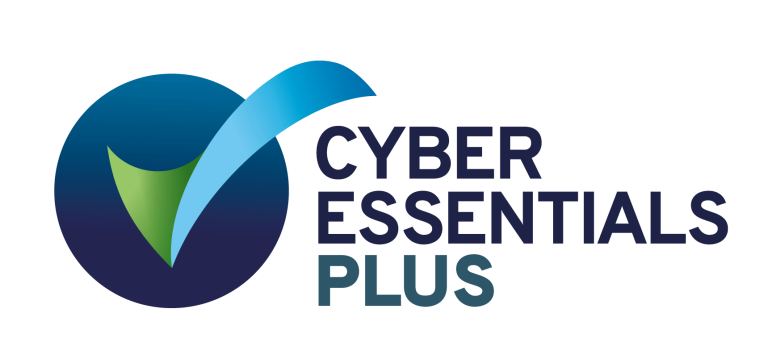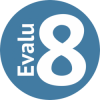For UK businesses, accurate time and attendance tracking is essential. Whether you’re managing shift workers, remote teams, or in-office staff, having the right system in place saves time, reduces errors, and ensures compliance with employment laws.
With so many options available, choosing the right T&A software can be overwhelming. In this guide, we’ll compare three leading solutions: Evalu-8 HR, Blip (BrightHR), and Planday, helping you decide which is best suited to your business.
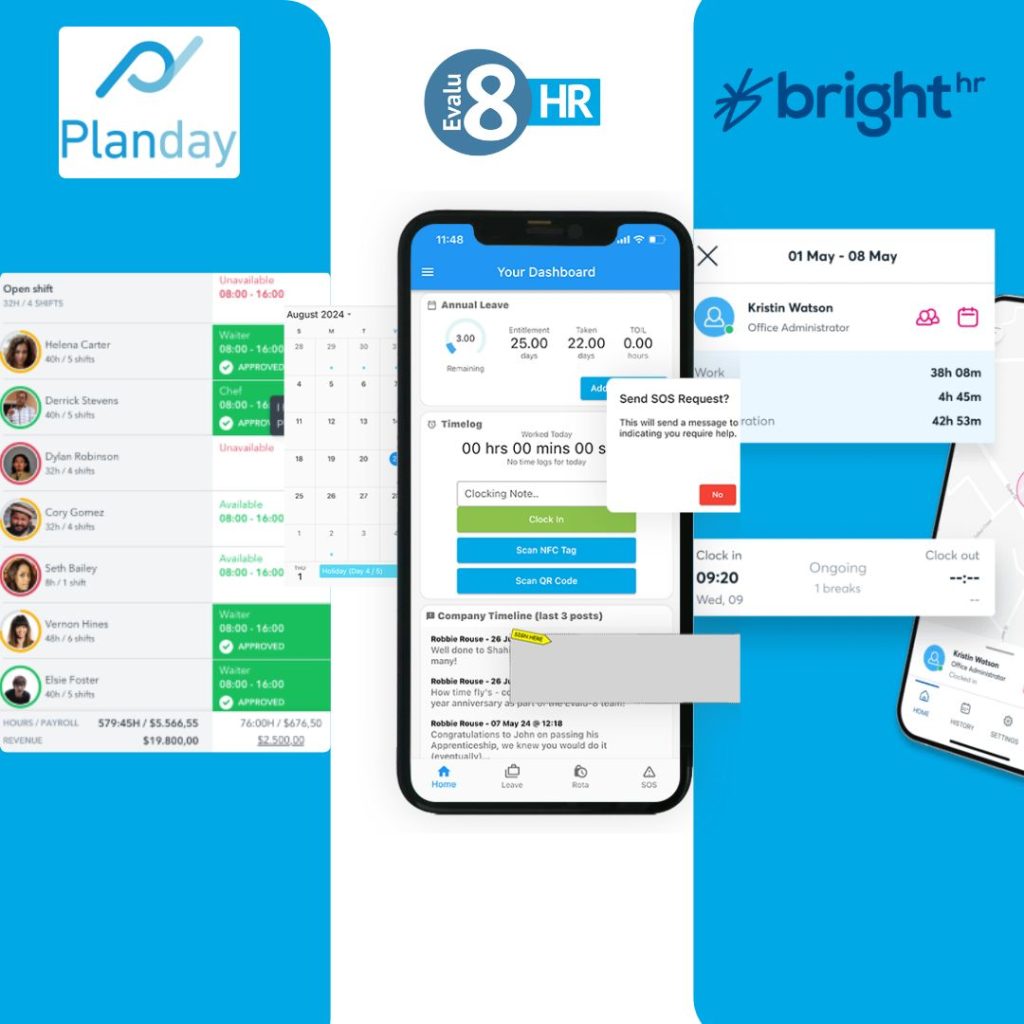
Helpful summary
Overview: This article compares three of the top time and attendance software solutions for UK businesses: Evalu-8 HR, Blip (BrightHR), and Planday. We analyse their features, reliability, automation capabilities, and ease of integration.
Why trust us: Evalu-8 HR provides an all-in-one workforce management solution, built with UK employment regulations in mind. Our expertise in HR and workforce automation ensures that businesses have the best tools to streamline operations.
Why it matters: Selecting the right T&A software isn’t just about tracking hours—it impacts payroll accuracy, compliance, and overall productivity.
Action points: Explore our detailed comparison to understand which software fits your business needs. If you want a fully automated, all-in-one HR and time-tracking solution, Evalu-8 HR is the clear choice.
How to choose the best time & attendance software: A decision-making framework
To help you assess which software is right for your business, consider these key factors:
- Do you need full HR integration?
- Do you require automated compliance tracking?
- Are you looking for seamless payroll syncing?
- Do you need a self-service portal for employees?
- Do you want to eliminate manual adjustments?
If you answered yes to most of these, Evalu-8 HR is your best choice.
Blip (BrightHR) vs Planday vs Evalu-8 HR: A Comprehensive Breakdown
Blip (BrightHR) – A Simple but unreliable option
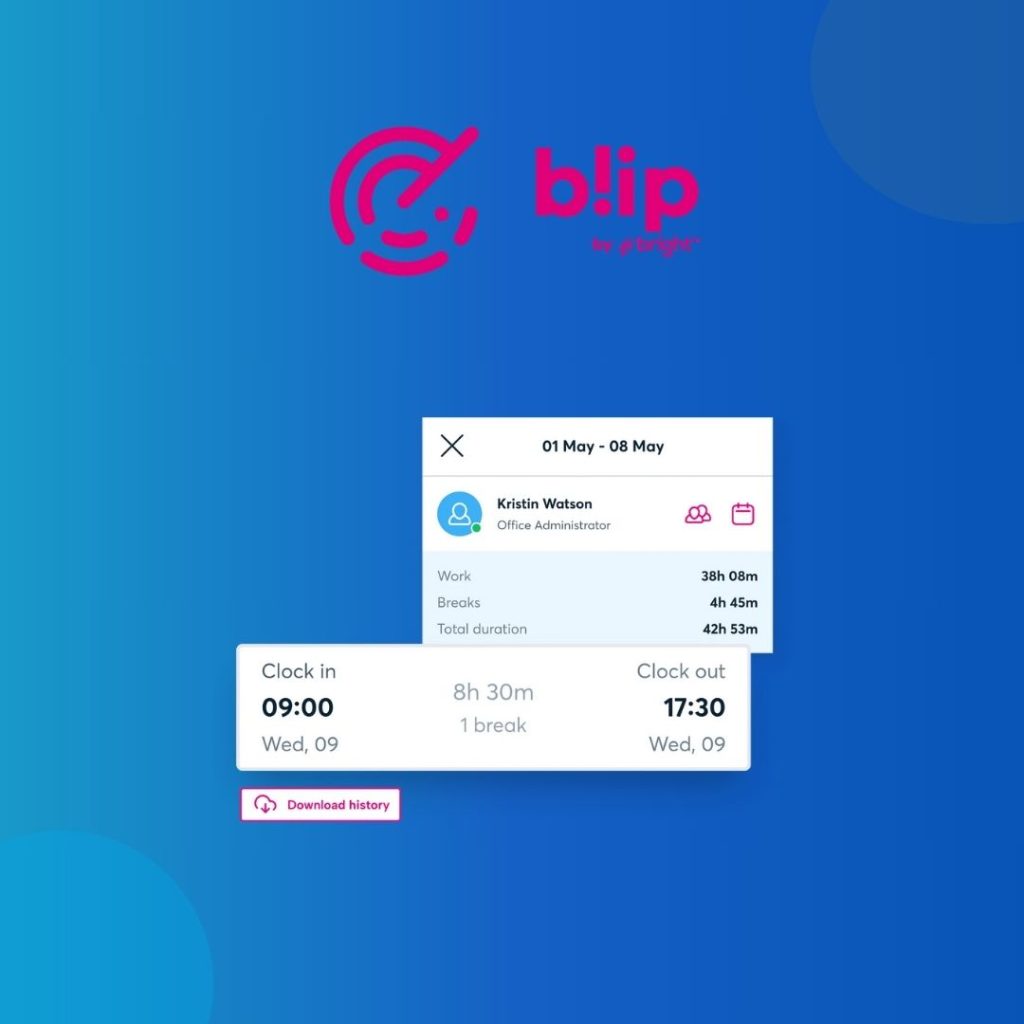
Blip is a time and attendance tracking application developed by BrightHR, designed to seamlessly integrate with BrightHR’s comprehensive HR software suite. This integration ensures that businesses can manage employee time tracking alongside other HR functions such as leave management and payroll processing, providing a unified platform for workforce management. Blip offers flexible clocking-in options, including geolocation and QR code scanning, catering to both office-based and remote employees. Its user-friendly interface and real-time data tracking make it a valuable tool for UK businesses aiming to streamline their time and attendance processes.
Core features
Geolocation clocking: Employees can clock in and out using GPS-based geofencing, allowing automatic prompts when entering or leaving predefined work areas.
QR code scanning: Businesses can generate and display unique QR codes that employees scan via the Blip app to register their attendance.
Break tracking: Employees can log the start and end of their breaks, ensuring accurate records of work hours and compliance with working time regulations.
Real-time updates: Managers receive immediate insights into who is in, off, or on a break, facilitating efficient workforce management.
Advanced features
Geofencing: Employers can set virtual boundaries around workplaces, with Blip detecting when employees enter or leave these areas and prompting them to clock in or out accordingly.
Device flexibility: Blip is accessible on various devices, including smartphones, tablets, and work computers, accommodating employees without smartphones or those preferring not to use personal devices.
Timesheet reporting: Blip generates detailed reports of employee work hours, breaks, and overtime, aiding in payroll accuracy and compliance with UK working time regulations.
Constraints and functionality gaps
Integration dependency: Blip’s full functionality is contingent upon integration with BrightHR’s broader HR software. Businesses not using BrightHR may find Blip less effective or may need to invest in additional HR software to manage other aspects like leave and payroll.
Limited offline functionality: Blip relies heavily on internet connectivity for real-time tracking and data syncing. In areas with poor connectivity, this could pose challenges for accurate time tracking.
Hardware requirements for QR codes: Utilizing the QR code feature necessitates the availability of devices capable of scanning, which may require additional investment for some businesses.
Pros & cons
Pros
Seamless integration: Blip integrates smoothly with BrightHR’s suite, allowing for centralized management of time tracking, leave, and payroll.
Flexible clocking options: Offers both geolocation and QR code scanning methods, catering to diverse work environments and employee preferences.
User-friendly interface: Designed for ease of use, facilitating quick adoption by employees and reducing administrative burden.
Cons
BrightHR dependency: Optimal use of Blip requires subscription to BrightHR’s services, which may not align with businesses using alternative HR systems.
Connectivity reliance: Performance is dependent on stable internet connections, potentially limiting functionality in remote or low-connectivity areas.
Additional hardware for QR codes: Implementing QR code clocking may involve extra costs for scanning devices if not already available.
Pricing
Blip is available as a free application for BrightHR customers. BrightHR’s pricing starts at £2.75 per employee per month, which includes access to Blip and other HR management features. This competitive pricing structure makes it accessible for small to medium-sized enterprises in the UK.
Why you may want to consider this vendor
When comparing Blip to other time and attendance solutions like Evalu-8 HR and Planday, several factors stand out. Evalu-8 HR offers a fully integrated system with extensive customisation options, making it a robust choice for businesses seeking a comprehensive HR solution. Planday focuses on employee scheduling with strong communication tools, appealing to companies with complex shift patterns. Blip, integrated with BrightHR, provides a user-friendly experience with flexible clocking methods, suitable for businesses looking for straightforward time tracking integrated with essential HR functions. Ultimately, the choice depends on the specific needs of the business, including the desired level of integration, customisation, and budget considerations.
Planday – A strong scheduling tool, but not a complete HR solution
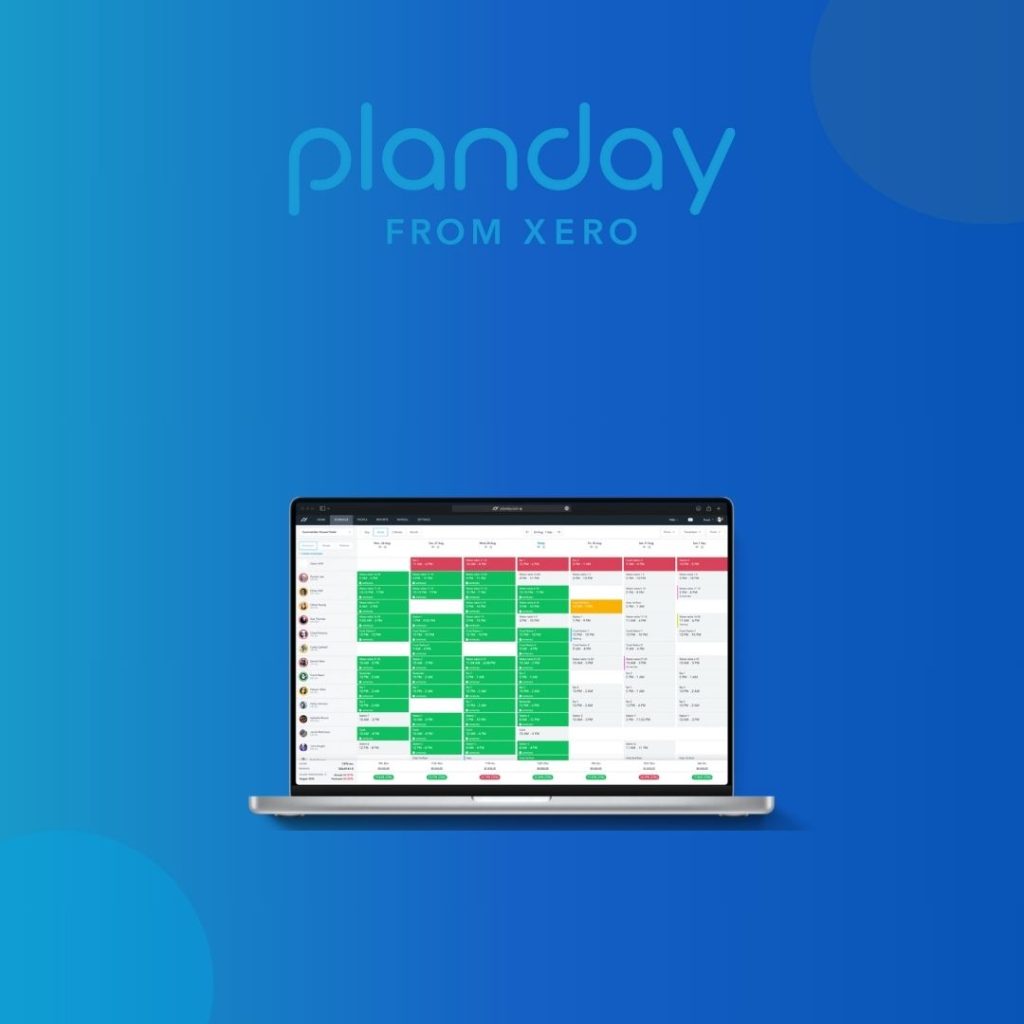
Planday is a workforce management solution best known for its shift scheduling and team communication tools. Its time and attendance functionality is built into its platform and is designed to support rota-driven businesses such as hospitality, retail, and healthcare. For UK employers with hourly teams, shift variability, or 7-day operations, Planday offers a streamlined way to track time worked, manage shift patterns, and link attendance directly to payroll-ready reports.
However, while Planday excels at shift-based environments, it’s not a full HR platform. That means features like employee records, leave management, onboarding, and compliance tracking must be managed via additional systems or integrations. This may introduce unnecessary admin for businesses seeking a single source of truth across HR and T&A.
Compared to Evalu-8 HR, which offers a fully integrated HR and time management solution, and Blip, which focuses on simple clocking-in functionality within BrightHR, Planday sits in the middle—strong for shift-led environments, but less comprehensive outside that scope.
Core features
Real-time clock in and clock out via mobile app or tablet kiosk
Time stamps automatically linked to scheduled shifts
Automatic timesheet generation based on hours worked vs planned shifts
Break and overtime tracking
Manager approval workflows for finalising hours before payroll
Absence logging integrated with shift schedules
Advanced features
Punch rounding, grace periods, and auto-approval rules to reduce admin
Location-based clock-ins using geofencing
Time tracking alerts for early/late clock-ins or unapproved overtime
Integration with multiple payroll providers
Detailed reporting on attendance patterns, labour costs, and shift compliance
Employee self-service for shift swaps, time-off requests, and availability updates
Constraints and functionality gaps
Not a full HR platform – employee records, documents, policies, and onboarding must be managed elsewhere or integrated via third parties
Limited absence management – basic leave tracking exists, but lacks the depth of a full HRIS (e.g. maternity tracking, Bradford Factor, compliance alerts)
Time and attendance tools are heavily rota-dependent, making it less ideal for salaried, hybrid, or project-based teams
Payroll integrations exist, but some require manual exports or third-party middleware
Some businesses may find the interface less intuitive compared to newer platforms focused on simplicity
Pros & cons
Pros
Strong time tracking for shift-based or hourly workforces
Seamless link between scheduled shifts and actual hours worked
Real-time data and mobile clocking options
Solid reporting for labour cost control and scheduling compliance
Payroll-ready output and integration options
Cons
Lacks integrated HR functionality, requiring separate software for full employee lifecycle management
Not well suited to salaried or fixed-hour teams
Absence management and compliance tracking are limited
Some set-up and training may be required for smaller teams
Pricing
Planday uses a tiered pricing model:
The Starter package includes basic scheduling and time tracking, typically starting around £2–£3 per user per month
More advanced features, including payroll integrations and reporting tools, are available on higher plans which can range up to £6–£8 per user per month
Custom pricing is usually provided based on business size, complexity, and required integrations
While cost-effective for rota-heavy teams, the need for additional HR tools may increase overall spend.
Why you may want to consider this vendor
Planday is a strong choice for UK businesses with complex shift patterns and hourly workers. It brings together rotas, clocking, and payroll alignment in one purpose-built tool. If your business revolves around rota planning and shift efficiency, Planday delivers a focused solution.
However, when compared with Evalu-8 HR, which offers fully integrated HR and time and attendance in one platform, Planday requires additional systems to manage the full employee lifecycle. It also lacks the seamless document, training, and absence tracking features that come as standard in Evalu-8 HR.
Compared to Blip, Planday is more advanced in rota management and payroll alignment, but Blip offers simpler, mobile-first time tracking that’s ideal for very small teams.
If you’re a growing business that needs shift optimisation and attendance control, Planday is worth considering. But if you’re looking for a single platform to manage HR, leave, absence, time, and training—Evalu-8 HR is the more comprehensive and scalable option.
Evalu-8 HR – The ultimate all-in-one time & attendance solution
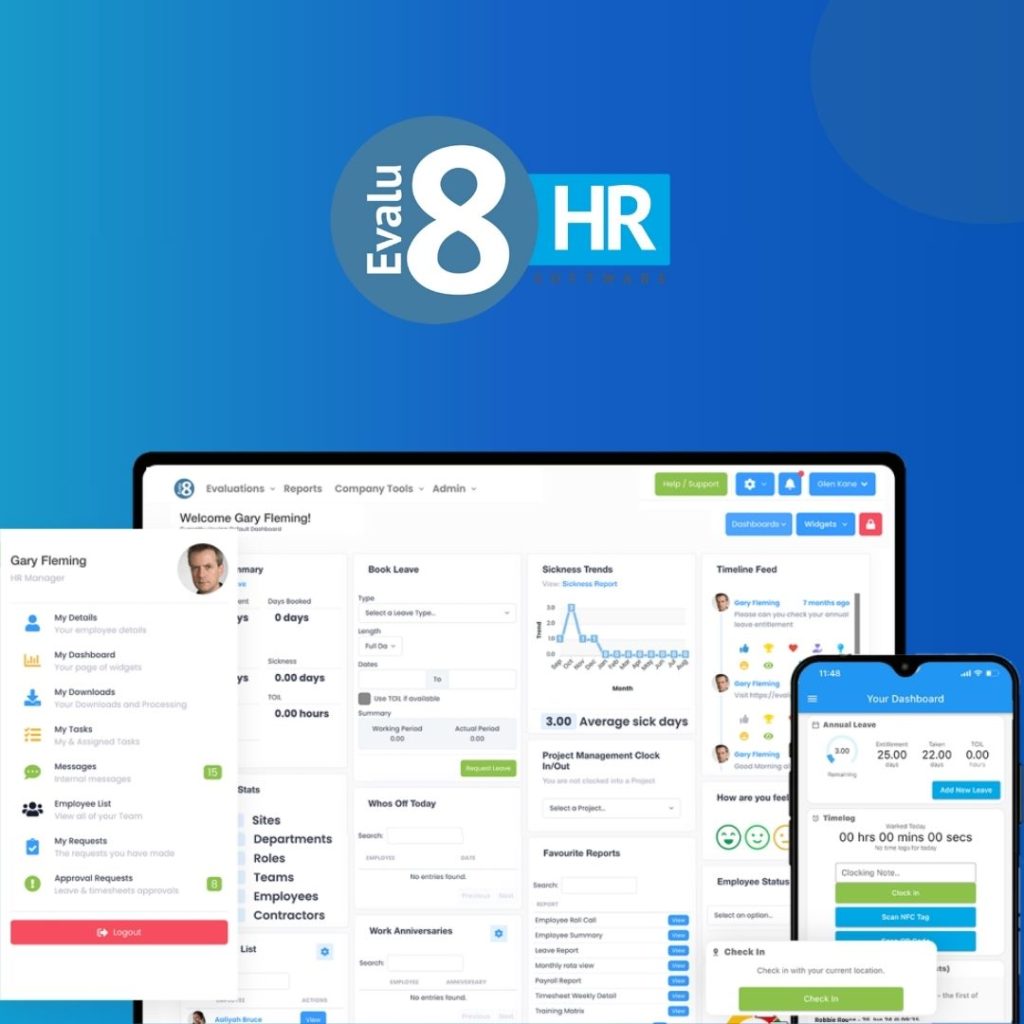
Evalu-8 HR offers a fully integrated time and attendance module as part of its broader HR platform—providing UK businesses with a centralised, real-time view of workforce activity. Unlike standalone time tracking tools that require additional HR software to manage absence, leave, and payroll, Evalu-8 brings everything together in one place.
Designed with flexibility and accuracy in mind, the platform supports a wide range of working patterns—from shift-based teams and salaried staff to hybrid and remote workers. The system links directly to rotas, leave management, overtime approvals, and performance tracking, giving users confidence that time data is accurate and aligned with HR compliance.
For organisations looking to reduce manual input, automate calculations, and manage time more intelligently without the complexity or high costs of enterprise tools, Evalu-8 HR offers a compelling and scalable solution.
Core features
Real-time clocking in and out via mobile, browser, tablet, QR code, or geolocation
Automated calculation of working hours, overtime, lateness, and breaks
Multiple time profiles to suit different working patterns (e.g. salaried, hourly, flexible)
Clocking restrictions based on shift times or locations
Direct integration with leave, sickness, and absence records
Manager approval workflows for timesheet adjustments or exceptions
Advanced features
Intelligent rota and working pattern integration, including variable shifts
Geofenced mobile clocking for remote and multi-site workers
Real-time alerts for missed clock-ins, late starts, or unapproved hours
Custom reports on time compliance, payroll summaries, and attendance trends
Payroll export integration with built-in calculations
Optional biometric device support for high-security environments
Constraints and functionality gaps
Offline clocking functionality (without mobile signal) is not yet available, but is on the product roadmap
Biometric clocking requires third-party hardware (integrated, but not native)
While highly flexible, organisations with unionised or highly complex workforce management requirements may still require some custom configuration support
Pros and cons
Pros
Fully integrated with HR, leave, rotas, and payroll exports
Configurable time rules for different roles and working patterns
Real-time visibility of attendance and working hours
Mobile and desktop access with flexible clocking methods
Built-in reporting for audits, payroll, and workforce oversight
UK-based development and support team with quick response times
Cons
Offline clocking is not yet supported
Biometric clocking is supported but relies on external devices
May require configuration support for highly complex shift rules (though this is included in onboarding)
Pricing
Evalu-8 HR is priced to support small and mid-sized UK businesses without sacrificing depth or flexibility:
The Core HR package is just £2.50 per licence, per month, which includes absence, leave, document management, performance, and training
The time and attendance module can be added for an additional £2.50 per licence, per month
Other add-ons such as rotas, asset tracking, and compliance monitoring are available.
This transparent, modular pricing structure allows businesses to scale as they grow, paying only for the features they need.
Why you may want to consider this vendor
Compared to other platforms like Planday, which is strong in shift scheduling but lacks integrated HR tools, or Blip, which offers basic clocking as an add-on to BrightHR, Evalu-8 HR delivers a more complete and configurable solution.
Where Planday requires multiple systems to manage time and HR data, Evalu-8 keeps everything under one roof—from clock-ins and holidays to contracts and compliance. And unlike Blip, which focuses on simplicity, Evalu-8 gives managers real-time insights, configurable time rules, and payroll-ready exports—all without the high price tag of enterprise solutions.
If your business is looking for a time and attendance system that doesn’t just track hours but connects every part of your HR process, Evalu-8 HR is the best all-in-one option for UK employers—combining flexibility, transparency, and value in a single platform.
Final decision: Which time & attendance software should you book a demo With?
Evalu-8 HR is the only solution that provides full automation, seamless payroll integration, and compliance tracking in a single system. Book a free demo today to see how it can transform your workforce management.
Got questions? Let’s get them answered
Frequently asked questions
Evalu-8 HR is the best choice due to its full automation, built-in compliance tracking, and seamless HR integration.
No, Blip lacks automation, requires manual corrections, and has integration limitations, making it unsuitable for scaling businesses.
No, Planday is mainly a scheduling tool. You will need additional software for payroll, compliance, and workforce tracking.
It automatically tracks hours and integrates directly with payroll systems, eliminating errors and manual admin work.
Yes! Book a free demo to see how Evalu-8 HR can revolutionise your workforce management.
